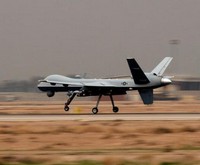The new weapons that sprouted on the battlefields of World War I ultimately revolutionized warfare. At the time of their appearance, however, most of them were used in a very traditional way, making old-fashioned infantry and artillery more effective rather than ushering in new ways of fighting. Airplanes spotted targets for artillery batteries, scouted for the infantry and provided close air support. There were some attempts at strategic bombing, but due to the limited payload and range of the aircraft of the time, it had little effect. Tanks, which first appeared in 1917, operated with infantry units as moveable machine gun nests or bunkers.
In other words, the appearance of these new weapons initially represented innovation but not revolution. It wasn't until after the war that military theorists recognized the revolutionary potential of tanks and planes if they were used properly. By World War II, rather than helping infantry slog across the battlefield, tanks and planes had become the spearhead of fast-moving combined arms formations that could operate deep behind enemy lines, with infantry supporting them rather than the other way around.
Cut to today: In Iraq, Afghanistan and the insurgent sanctuaries of Pakistan, the U.S. military has fielded a wide array of new technologies, with robotics being by far the most important. Today, 30 percent of U.S. military aircraft flying in those conflicts are drones. Nearly every land unit has robots of one type or the other. But as in World War I, new technologies have been used to augment existing military formations and methods. While robots are pervasive, they are not revolutionary. At least not yet.

